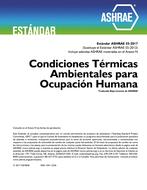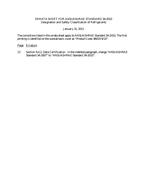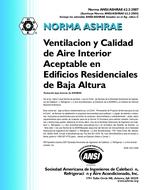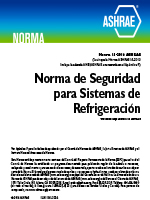Description
Sound climate data is a critical component of HVAC design, system sizing and energy consumption estimates. This study evaluated the effects of future climate conditions on existing HVAC systems and facility infrastructure. Specifically, the impacts of projected climate variability on energy consumption, peak demands and energy cost at NASA’s John C. Stennis Space Center (SSC) were evaluated using calibrated building energy modeling and downscaled climate model data. Facility property and energy consumption data were collected to characterize campus energy consumption for 142 buildings. We identified the buildings that together accounted for 85% of total SSC energy consumption. These 39 buildings were singled-out for an on-site facility survey. During this survey, information was collected about building conditions, functions, occupancy, systems and operation. Energy models of these buildings were then constructed and calibrated to present-day measured energy consumption through an iterative parametric optimization routine. In this way, an aggregate energy model of SSC under current climate conditions was developed.
Future climate data were retrieved from the North American Regional Climate Change Assessment Program (NARCCAP) representing high resolution climate change simulations from regional climate models coupled to general circulation models. Two future scenarios were selected for study – low impact and high impact. The calibrated building energy models were then simulated using the two future climate scenarios. The difference in model predictions between the future and current climate scenarios allowed us to estimate the effects of climate change on site energy consumption, peak energy demand, and energy cost. It was found that predicted future climate variations at SSC were likely to be moderate, with significant summer warming only under the high impact scenario. Winter average temperatures were found to decrease under all scenarios. This future climate variation had a generally modest impact on energy. Annual electricity consumption increased from roughly 4% to 11% under the two scenarios examined. While natural gas consumption increased about 24% to 36% due to predicted colder winters, the impact at SSC is small due to the relatively low natural gas consumption in this climate. Peak annual electric demand decreased by almost 2% and increased by almost 20% under the low impact and high impact scenarios respectively. The overall methodology of the study provides direction for long-term facility decisions, allowing staff to plan ahead and make cost effective decisions today that minimize the effect of future climate variations.
Citation: ASHRAE Papers CD: 2014 ASHRAE Annual Conference, Seattle, WA
Product Details
- Published:
- 2014
- Number of Pages:
- 8
- File Size:
- 1 file , 2 MB
- Product Code(s):
- D-SE-14-C026




